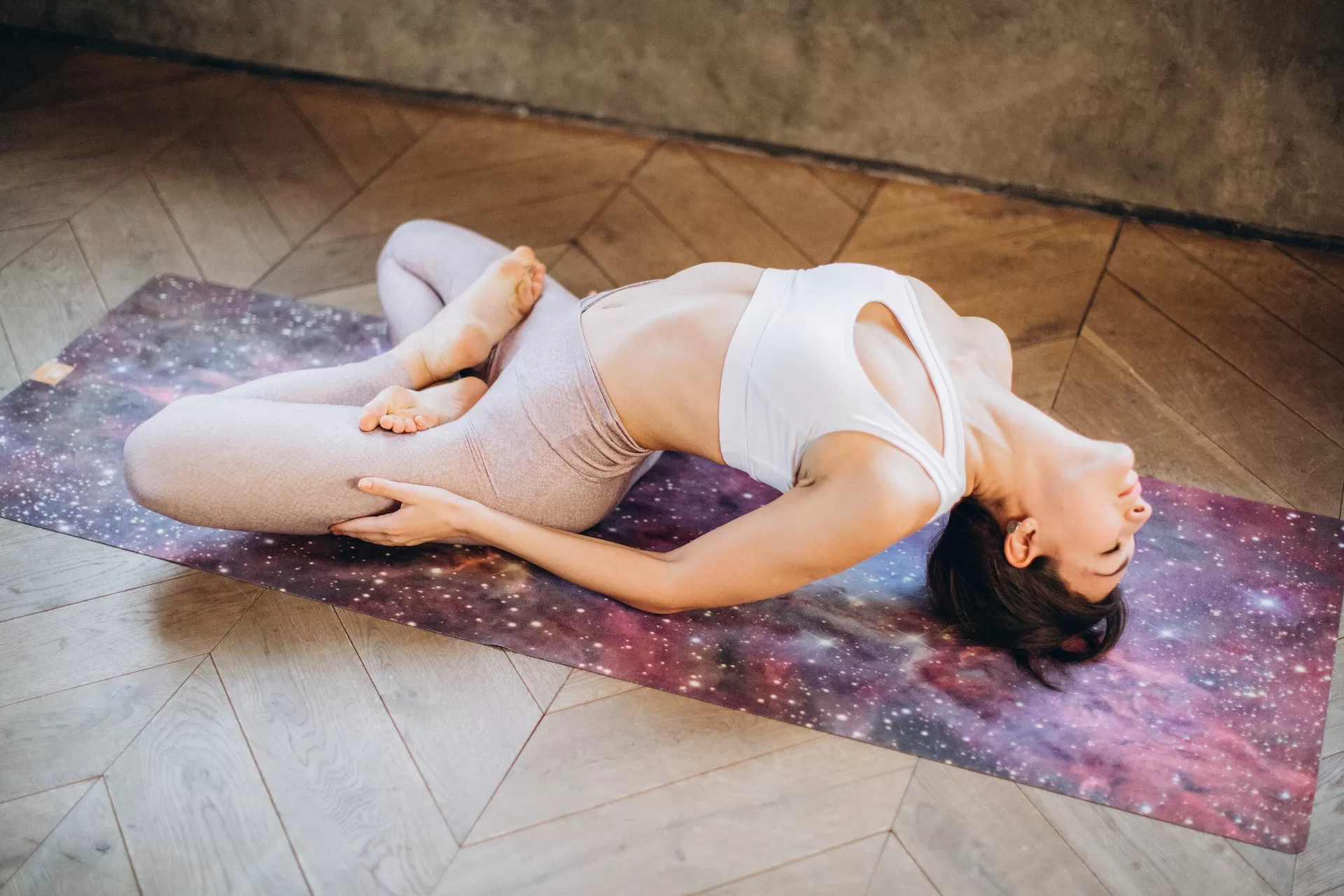Introduction
The ancient practice of Matsyasana, or Fish Pose, has been a fixture of yoga practice for centuries. The pose is believed to have originated in India, though its precise date of origin is unclear.
Although Matsyasana is an accessible pose that is often recommended as a basic pose for introductory yoga classes, it is also a pose with deeply intricate and powerful therapeutic effects.
In this comprehensive guide, we will explore the history and principles of the pose, the anatomical mechanics bridged to the pose, and the diverse psychological and physical benefits of this magical postural shape.
History of Matsyasana
The earliest written documentation of Matsyasana dates from 15ht century in the Hatha Yoga Pradipika, as a supported back-bending pose.
Principles of Matsyasana
The foundation of Matsyasana is that it is an intensely therapeutic pose designed to stimulate a wide range of psychological and physical processes.
The pose invokes a focused and engaged experience of postural exploration. In order to unlock and understand the potential of this pose, it is important to recognize three key principles underlying the pose: the external aspect of the pose, the internal aspect of the pose, and the fusion of the two.
External Aspect of Matsyasana
When considering the external aspect of the pose, it is helpful to focus on the motion of the spine, the opening of the chest, and the lengthening of the abdominal region.
As the spine curves in an elongated arch, the chest opens, creating space between the ribcage and pelvis, while the abdomen is stretched, allowing for a greater range of motion in the abdominal muscles and internal organs.
Internal Aspect of Matsyasana
Containing the external aspect of the pose is the internal aspect, in which the body and mind become consciously aware of the sensations taking place in the body.
This awareness can bring about a much greater expansive experience, as the participant begins to explore the depths of the pose in a way that promotes relaxation, invigoration and harmony.
Fusion of Aspects
The third principle of Matsyasana is the fusion of the two aspects of the pose: the external and the internal aspects. By fusion of these two aspects, the practitioner can create a unique full body experience, in which the movements of the body are taken further into a mindful space, and the subtle movements of the mind begin to spread into the body.
Anatomical Mechanics
The matsyasana pose, being a backbending pose, manipulates the spine in a lateral flexion angle, creating space between the vertebrae and encouraging full release along the back.
As the practitioner progresses deeper into the pose, the body is stretched, with space being created along the dorsal spine, opening up the chest and expanding the abdominal region.
These mechanics open up areas of the body that normally lay dormant, such as the levator scapulae (in the neck), the serratus anterior (of the chest), the rhomboids (in the back), the iliopsoas (in the hips), the trapezius (space between the shoulders), and the quadratus lumborum (abdomen).
The interplay of the internal and external aspects of the pose help to further extend the range of motion in these regions, allowing for greater flexibility and stretch.
Psychological Benefits of Matsyasana
The psychological benefits of Matsyasana are as powerful as the physical benefits. As the body moves in this backbending pose, the stresses and pressures that are commonly experienced in many areas of life, such as daily routines and work commitments, are counterbalanced by the soothing and calming effects of the pose. This balancing of the stresses of daily life can be felt almost immediately, allowing for an increased level of focus, clarity and presence of mind.
The meditative effects of Matsyasana are also profound and serve to bring awareness to the inner body, bringing both the mind and the body into alignment.
This alignment of the body and mind in turn creates a greater sense of peace and connection within the body, allowing both positive and negative energies to be released, creating a space in which new and creative ideas can be explored.
How to perform Matsyasana
When it comes to aligning the body for the Fish Pose, it is important to start from a seated position. The spinal column should be kept straight at all times, and the arms should be resting by the side of the body. The head should be leaned slightly backwards, and the chin should be slightly tucked in.
Once in this position, the practitioner should lift their chest up slightly in order to open the chest and shoulders.
The next step is to take hold of the feet with the hands, and to cross the right foot over the left. The knees should then be lowered to the floor, with the chin still tucked in. If comfort permits, the elbows should be bent with the forearms lowered to the floor, with palms facing upwards. Keep the shoulders relaxed and the spine straight throughout. At this point, the Fish Pose is complete.

It is important to note that it is not necessary to go into the full posture to gain the benefits of the pose. In fact, some practitioners may like to stay in the seated position, and simply maintain the spinal alignment and shoulder positioning throughout the posture. This has many of the same effects, including developing strength in the core and spine.
Additionally, it can offer a nice break from standing poses, and acts as a rest period during a sequence. Once the Fish Pose has been performed, a period of rest should be allowed in order to Integrate the energy released from the posture.
Conclusion
Poses such as Matsyasana hold a special place in the practice of yoga and provide a powerful and transformative experience for practitioners. By unlocking the depths of this potent postural shape, practitioners can begin to transform their physical, mental and emotional wellbeing.

